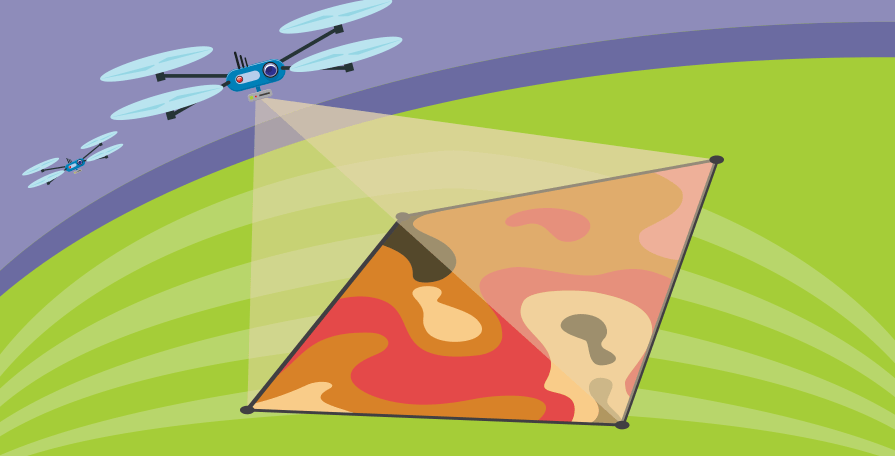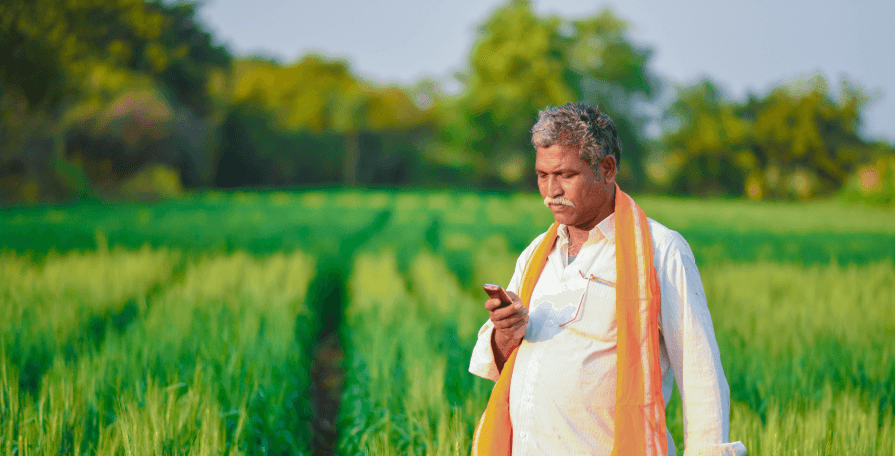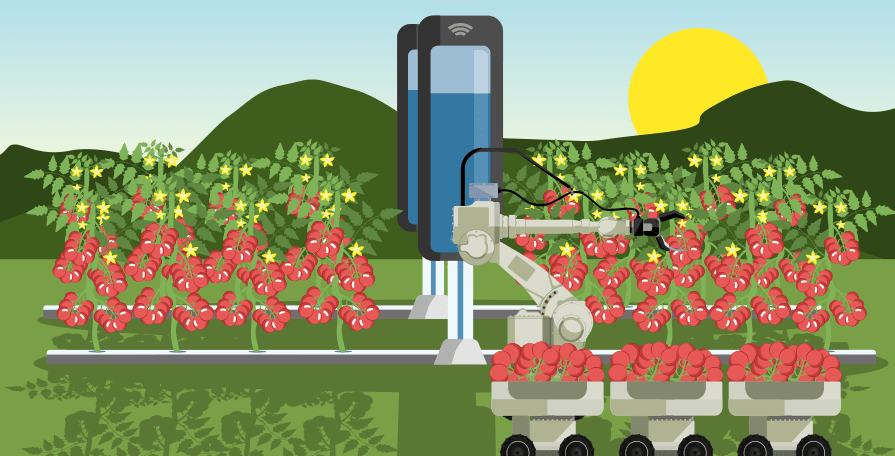The agriculture sector in India employs more than 50% of the total workforce of the nation and contributes around 17-18% to the country’s GDP.1 Despite holding such a significant space in the economic equation, agriculture in India has remained confined to traditional methodology for the longest time. However, this trend has witnessed a transformation in the recent years, and the farming sector has begun attracting several large conglomerates, leading IT companies, private investors and young innovators, expanding the scope for agriculture technology in India.
The new-age agriculturists are deploying innovation and technology to foster a new green revolution, and precision farming in India is emerging as a popular feature of this transition. Precision agriculture is the application of correct amount of inputs at the right time to the crop to increase the productivity and maximise the yield. The use of GPS allows precise mapping of farmlands. This, along with appropriate software, informs the farmers about the status of their crops, and identifies the area of the farm that requires water, fertiliser or pesticide, enabling them to make well-informed decisions.

The global market for precision agriculture is expected to grow at an annual growth rate of 13.09% to reach a market size of over US$ 6.34 billion by 2022, and India is expected to see an annual growth rate of 18.29% during the same period.2 A recent example of precision agriculture was witnessed in India when farmers from Andhra Pradesh and Karnataka waited to get a text message before they sowed the seeds. The SMS, which was delivered to them in their native language, informed them when to sow their groundnut crops. Farmers from Telengana, Maharashtra and Madhya Pradesh are also receiving automated voice calls to alert them if their cotton crops are at risk of a pest attack, based on the weather conditions and crop stage.3

Hitachi Process Intelligence also accelerates this agricultural deployment by combining advanced processes and data analytics, creating a roadmap to speed transformation, using IoT in agriculture to gain actionable insights. By assessing current farm operations against best practices in digital agriculture, Hitachi reveals opportunities where data should and could be captured to enable more informed and agile decision making, as well as discovers where automation can increase productivity through smart agriculture technologies.
Moving from pre-harvest to post-harvest, smart cameras are being used to identify ripened produce and agricultural robots are being programmed to pick specific crops like cotton, vegetables and fruits without incurring the cost of expensive seasonal labour. In certain states of India, the Government is getting price forecasts for essential commodities several months in advance for planning for the Minimum Support Price (MSP). All this transformation reflects on the fact that the farming communities as well as the Government are embracing the agri-tech wave in India.4

What’s more, the recent infiltration of budget smartphones, low-priced access to high-speed internet, promising smart agriculture start-ups, and the growing regional online content are all helping B2F (Business to Farmer) tech companies with direct access to the farmers. The Government is also doing its best to boost innovation in agriculture in India through initiatives like AGRI-UDAAN that mentors start-ups, and eNAM (National Agriculture Market) that integrates online agricultural markets, allowing farmers and traders to crack best possible deals.
Hitachi and Hitachi Solutions Ltd. (an SI and solutions company) offering Geographical Information Systems Products like Hitachi Solutions Geographical Information System (Hitachi Solutions GIS) has more than 30 years of history and a wide-range of references focused on agriculture, besides several other sectors. Hitachi’s GIS can help the farmers with crop acreage estimation and crop damage/loss assessments using the current advancement in remote sensing in agriculture and geospatial technology along with the development of a web portal to centralize crop related maps, data and reports. By providing these important agricultural statistics, GIS can help the farmers in increasing their agricultural production, productivity and profit. So by bringing the farmers into the fold of the GIS based Integrated Crop Advisory Services, Hitachi enables the farming communities to make data-based business decisions across all processes and aids the Government in promoting food security for every citizen.
Source:
1 - https://www.financialexpress.com/budget/india-economic-survey-2018-for-farmers-agriculture-gdp-msp/1034266/
2 - https://m.economictimes.com/news/economy/agriculture/precision-agriculture-can-do-wonders-for-indian-farming/articleshow/66345065.cms
3 - wipo_pub_gii_2017-chapter5 PDF
https://amp.indiatimes.com/news/india/how-the-internet-of-things-is-digitizing-agriculture-speeding-up-rural-development-in-india-326546.
4 -https://www.hitachiconsulting.com/solutions/hitachi-process-intelligence.html
www.hindu.com/news/national/karnataka/agri-price-forecasting-model-to-get-a-microsoft-update/article19548685.ece//amp/

